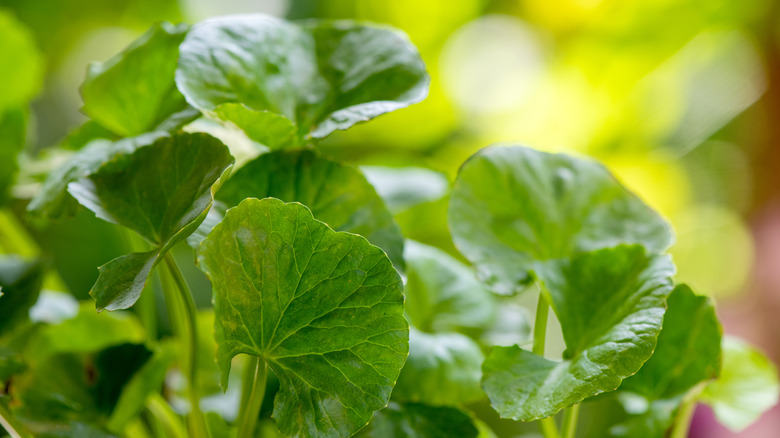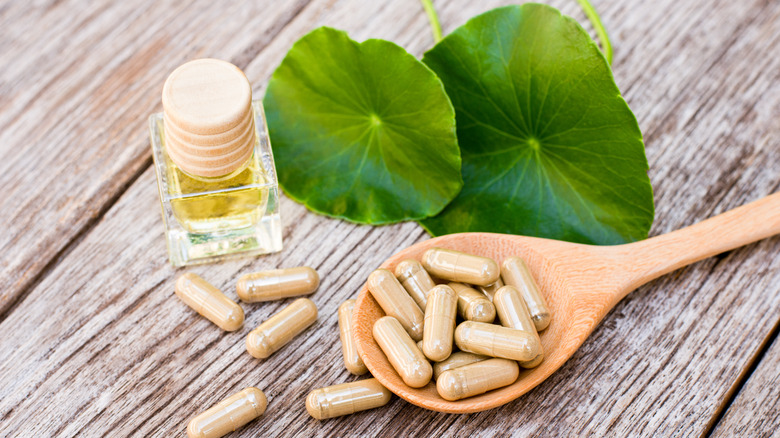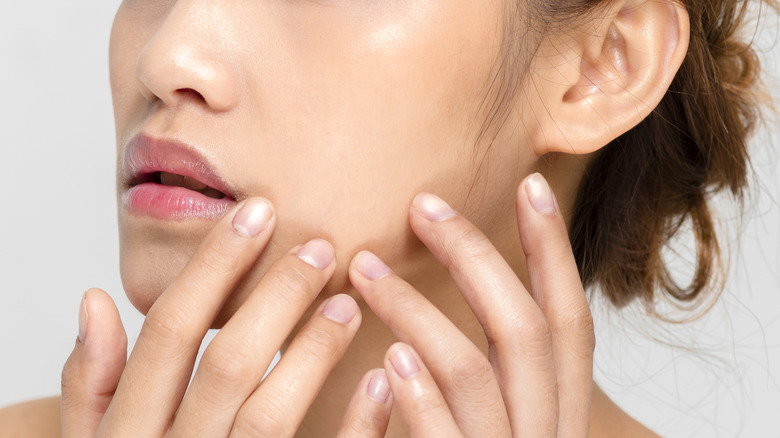What Is Centella Asiatica, And What Does It Do For Your Skin Care?
Centella Asiatica, or cica, is widely used in the beauty industry for its anti-inflammatory and antioxidant effects. You'll find it in creams, lotions, eye serums, and facial masks, as well as in hair conditioners and shampoos. Manufacturers say that it soothes irritated skin, facilitates wound healing, and slows the aging process due to its collagen-boosting properties. But can you really trust these claims?
Also known as Gotu Kola or Asiatic pennywort, this plant has been around for centuries. Clinical evidence suggests that it increases collagen synthesis and reduces inflammation, according to a 2013 review published in Advances in Dermatology and Allergology. As the researchers note, cica may help improve psoriasis symptoms and speed up wound healing while protecting your skin from UV radiation and oxidative stress.
Cica is by no means a cure-all, but it may improve skin health. Rich in terpenoids, saponins, and other antioxidants, this herb can minimize the signs of aging and boost skin elasticity. It also appears to be effective at treating eczema, cellulite, scleroderma, notes the Advances in Dermatology and Allergology review. Let's take a closer look at its mechanism of action and potential benefits.
What you should know about cica, the skincare ingredient that slows down aging
Touted as a miracle ingredient, cica has been in Ayurvedic medicine for thousands of years. This ancient herb belongs to the Apiaceae or Umbelliferae family and grows in India, Pakistan, South Africa, Eastern Europe, and other regions around the world. Traditionally, it was used for wound healing, lupus, psoriasis, eczema, fever, and female urogenital diseases, reports a 2010 research paper featured in the Indian Journal of Pharmaceutical Sciences.
Current evidence supports its health benefits, as noted in the above review. Scientists say that it's an excellent source of saponins and other compounds with therapeutic action. In animal studies, it increased collagen synthesis and skin tensile strength, reduced anxiety, and improved depression symptoms. A 2016 study published in the Indian Journal of Pharmaceutical Sciences suggests that it also hydrates the skin and reduces water loss.
Another study, which was featured in Clinical, Cosmetic, and Investigation Dermatology in 2017, found that cica may improve skin hydration for up to 24 hours after a single application. Researchers used a moisturizing fluid containing hyaluronic acid and glycerin in addition to Gotu Kola, so these ingredients may have helped, too. As you likely already know, hydrated skin has a more youthful appearance. When your skin is dry, it's easier to notice wrinkles and fine lines.
Centella Asiatica protects your skin from oxidative stress
Oxidative stress is a major contributing factor to skin aging. Over time, free radicals can weaken the skin's protective barrier and alter your DNA, explains a 2015 review published in the journal Biomolecules. These compounds also affect collagen and hyaluronic acid levels in the skin, leading to wrinkles and fine lines. The antioxidants in Centella Asiatica may protect against oxidative stress and regenerate your skin.
In one study, researchers asked 20 women to apply a cream containing madecassoside, a naturally occurring compound in cica, along with vitamin C on the skin (via Advances in Dermatology and Allergology). After six months, their skin was firmer and more elastic. Subjects also experienced an increase in skin hydration. Scientists attribute these findings to the collagen-boosting effects of madecassoside, saying that it's beneficial for photoaged skin.
As dermatologist Shari Marchbein told Allure, "[Cica] is chock-full of amino acids, beta-carotene, fatty acids, and phytochemicals, including vitamins C, A, B1, and B2." These nutrients protect your skin from environmental damage, which in turn may prevent premature aging, she adds. Moreover, this herb promotes cellular repair and fights inflammation.
Cica may also reduce the appearance of cellulite
This Asian plant may improve your skin's appearance and reduce cellulite (per Advances in Dermatology and Allergology). Researchers say that it improves circulation and helps your body metabolize lysine and proline, two amino acids involved in collagen synthesis. As a result, cica may decrease the volume of fat cells and inhibit cellulite progression.
It's interesting to note that both oral and topical cica products can be effective against cellulite. In one study, 85% of subjects who applied cica cream four times a day for four months achieved better-looking skin. In another study, men and women who took 60 milligrams of Centella Asiatica per day for three months had a greater reduction in the diameter of fat cells than the placebo group (via Advances in Dermatology and Allergology).
All in all, Gotu Kola can be a welcomed addition to your beauty regimen. As Dr. Ifeoma Ejikeme told Glamour, "Cica can be implemented in your skincare routine by using it in your daily moisturizer or serum once or twice a day." She recommends checking the label for madecassoside, madecassic acid, pentacyclic triterpenes, and other naturally occurring compounds in this plant. As for which products to buy, rinse-off products don't stay long enough on the skin to be effective, cosmetic chemist Perry Romanowski explained to Allure. Therefore, you should choose a cream, serum, body lotion, or sheet mask, rather than cica cleansers or body washes.



